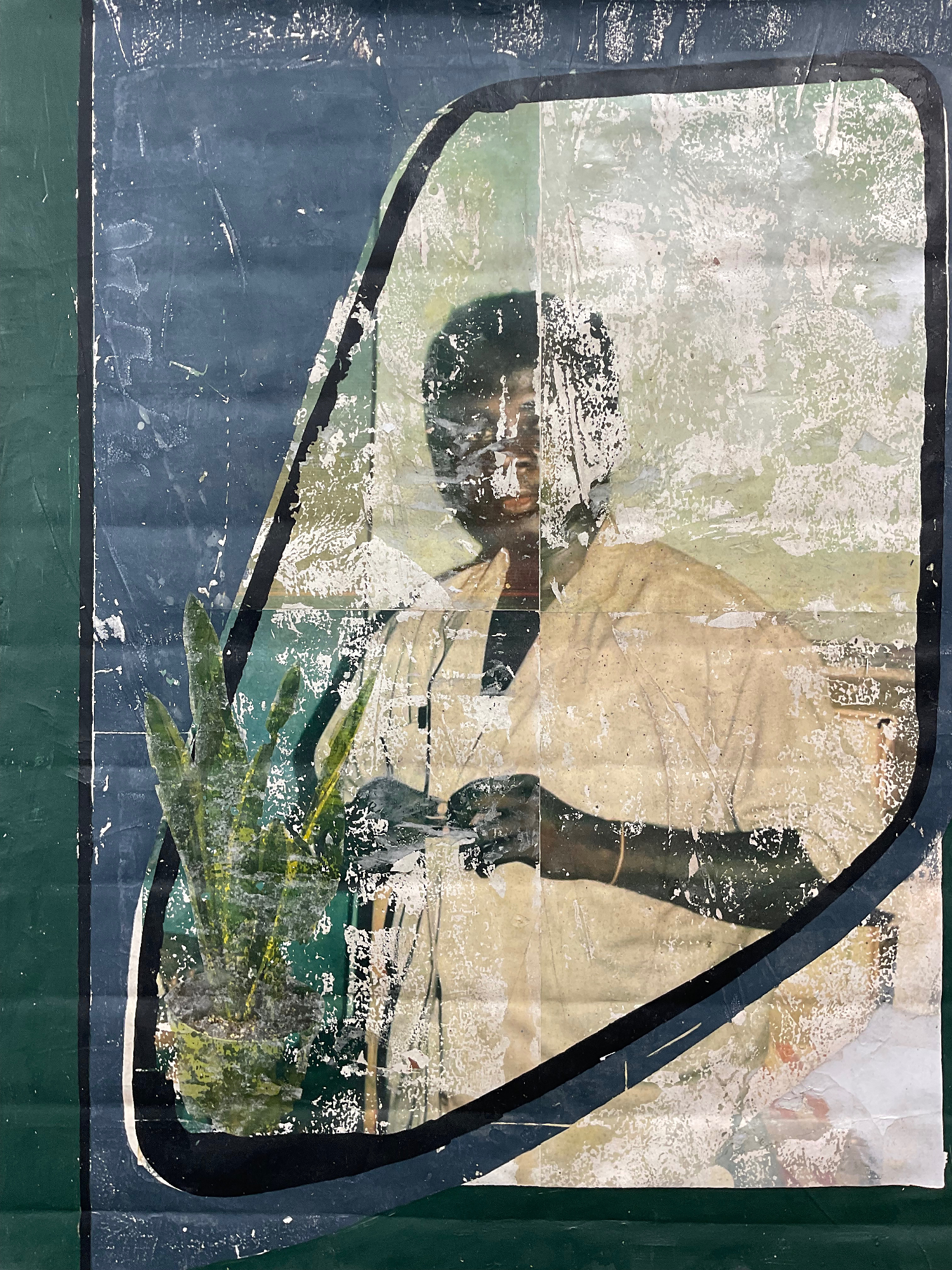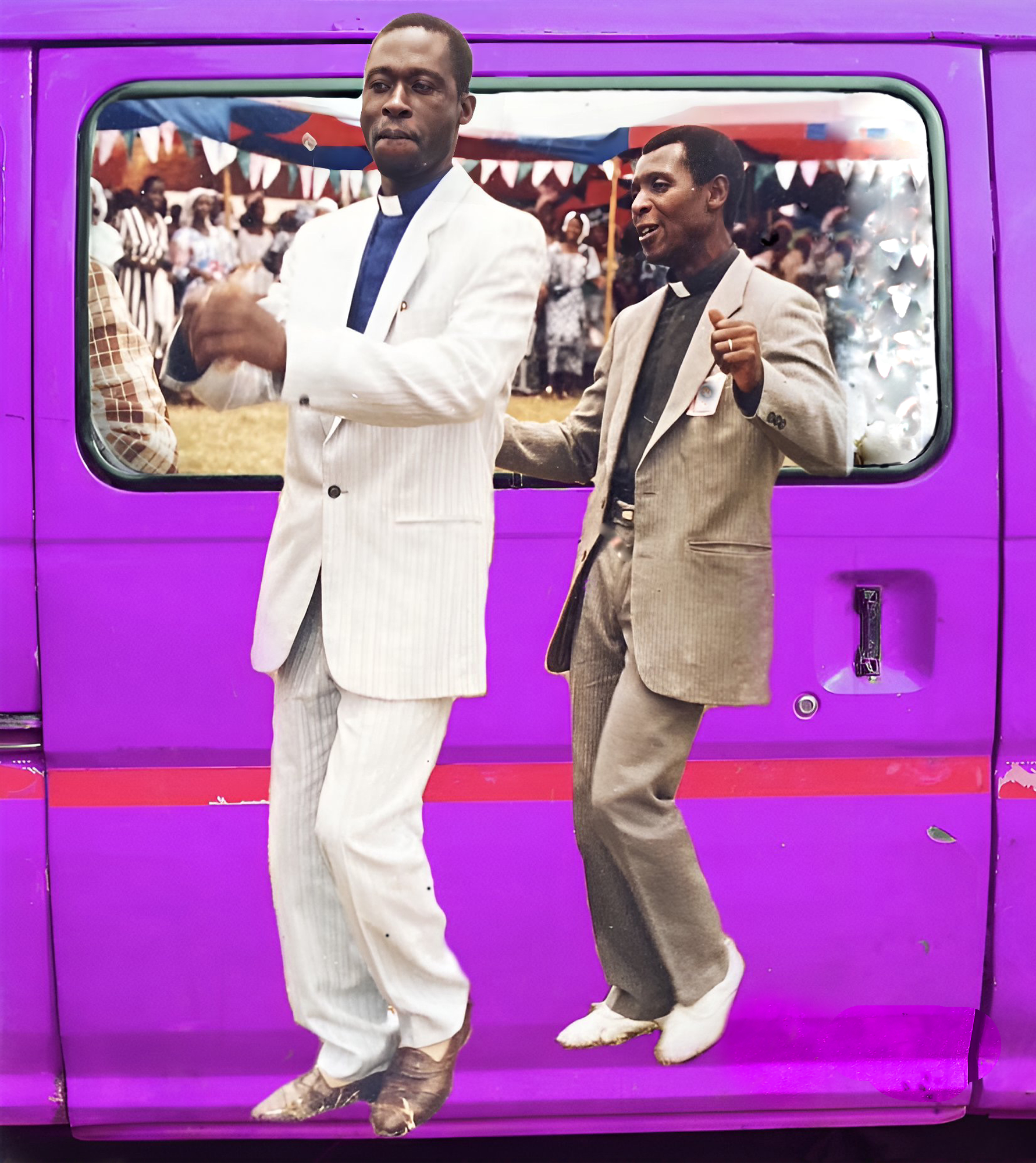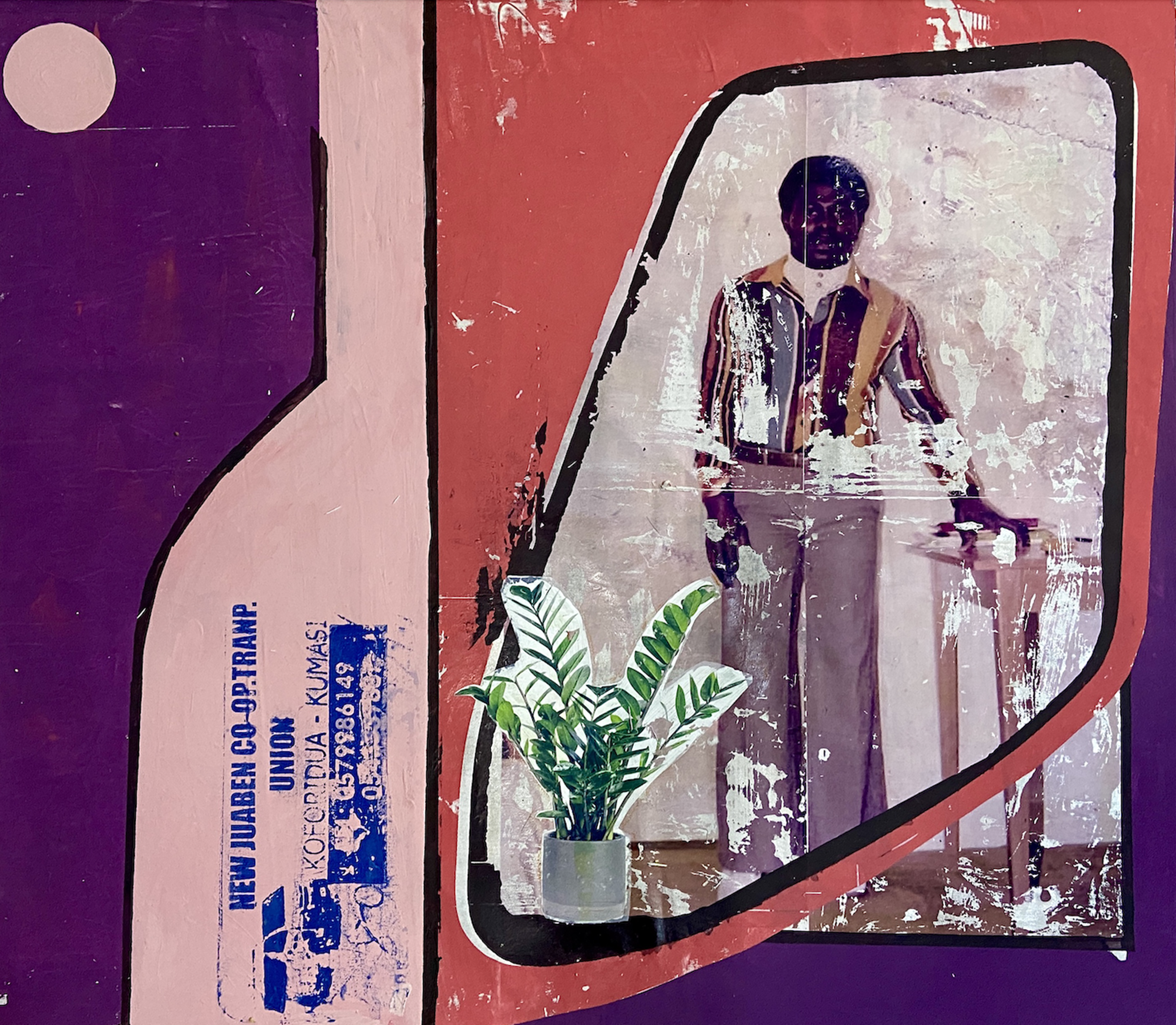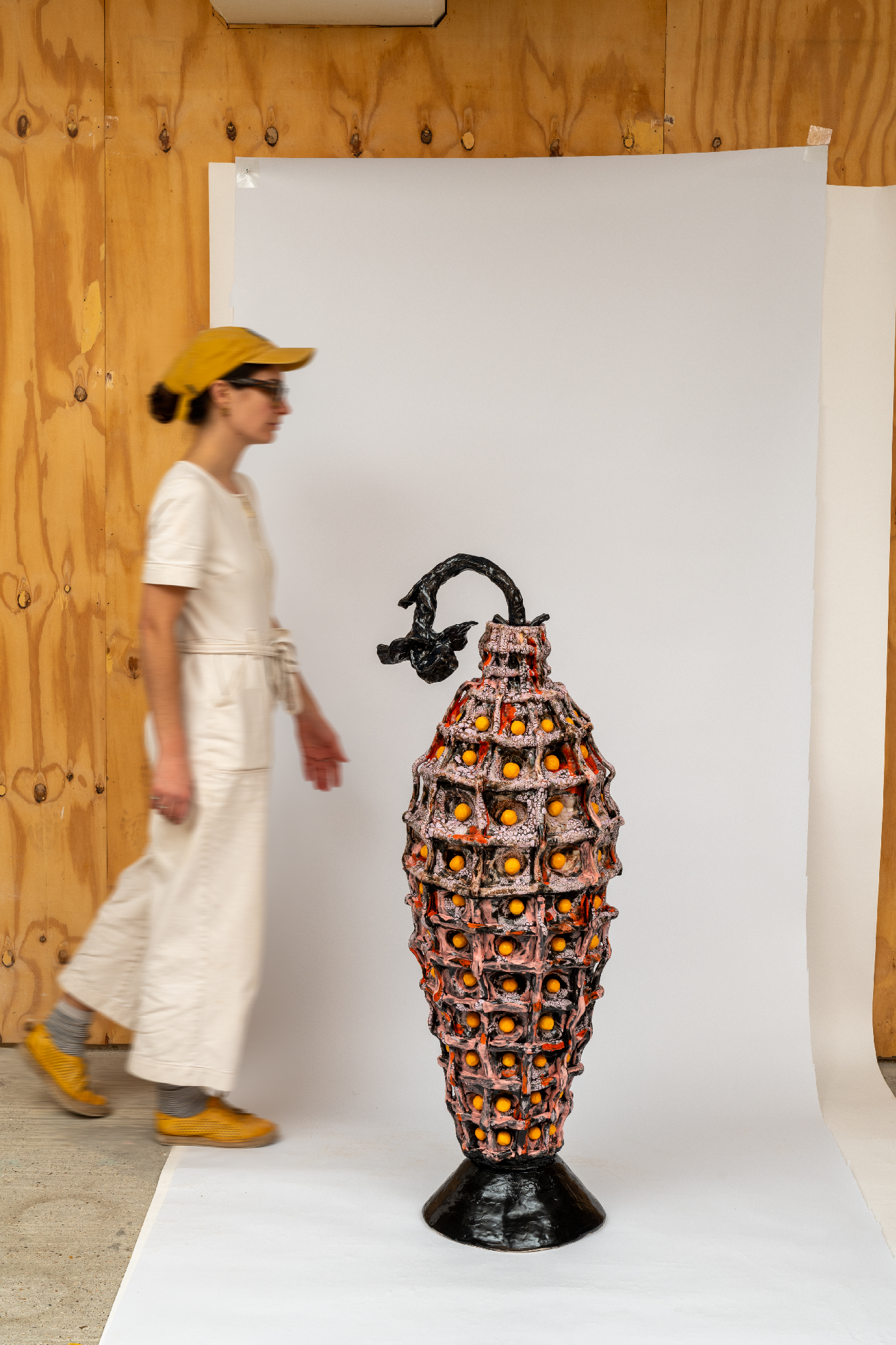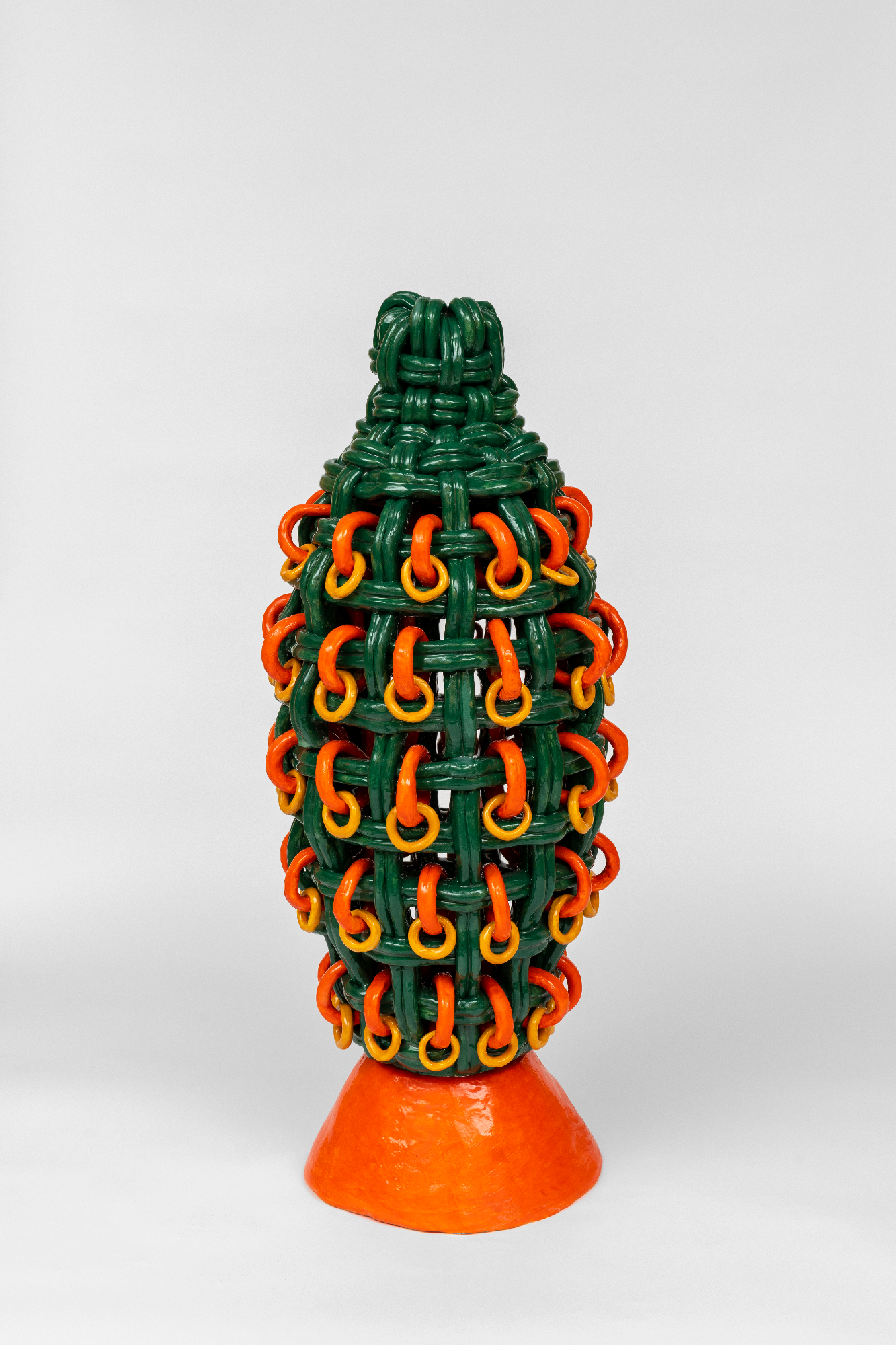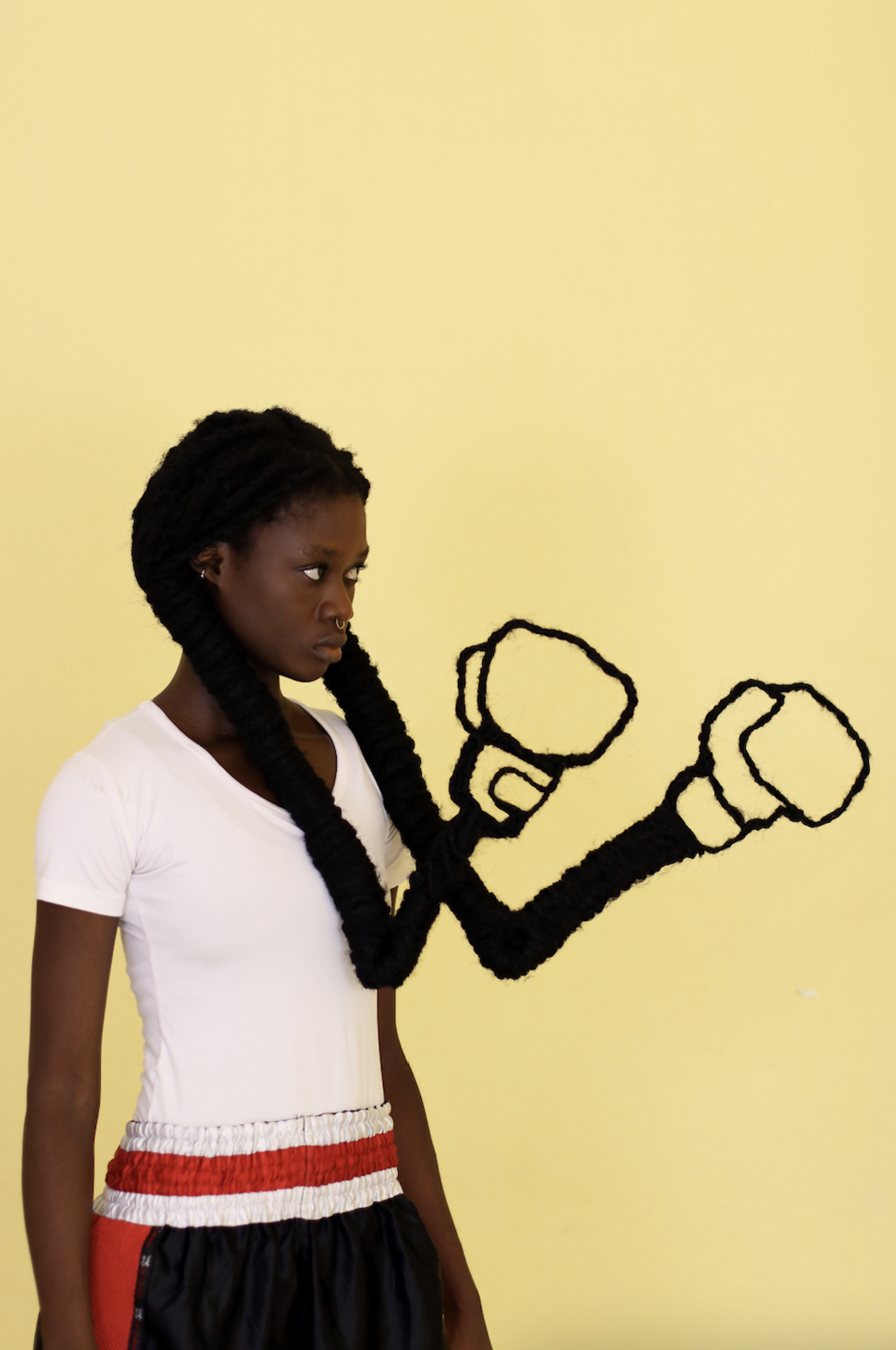Our three artists to watch at 1-54 New York bringing colour and conversation to the city
1-54 returns to New York in early May at a time when the city feels especially charged ahead of the US elections. With the drama of the previous president’s legal battles raging just a few subway stops south of the art fair’s new Chelsea venue, and contentious Columbia University protests over the Israeli/Palestine conflict happening uptown, NYC and the audience descending on 1-54 are enraptured in political unrest. Against this backdrop, the artists and special events showcased at 1-54 take on a timely relevance as they dive into the issues that matter most to us as a society. Visitors are invited to become active participants in a larger cultural conversation that challenges the status quo and imagines new possibilities for the future. In a city where tensions run high and the stakes are higher still, 1-54 is a space where diverse voices from Africa and its diaspora can come together in solidarity and celebration of the transformative power of creativity. So, as a media partner for 1-54 New York, Nataal hails three thought provoking emerging artists you can’t afford to miss.
Caleb Kwarteng Prah at Nil Gallery
Caleb Kwarteng Prah captures the essence of Ghanaian life with striking clarity and depth. With each bold image, he invites viewers to immerse themselves in the complexities of his culture. “I'm drawn to the Ghanaian working class and the everyday objects that embody the resilience and the resourcefulness of the people,” he tells us. “I'm fascinated by the way these objects can hold extraordinary stories and meanings. Through my art, I aim to celebrate the beauty in the mundane and highlight the often-overlooked aspects of Ghanaian culture.”
Prah studied painting at KNUST in Accra and now draws on portraiture, photography and painting to create works that capture everyday moments with candour, humour and irony. Trotro mini busses and their eclectic decorations are a recurring theme. “Trotro culture has taught me to embrace the beauty of imperfection and the power of self-expression,” he explains. “I try to staying true to the essence of the scenes I photograph while also experimenting with composition, colour and texture to develop a unique visual language.”
As an artist, Prah believes in the importance of amplifying the voices of those he portrays. Now showing internationally, he’s keen to challenge dominant narratives and offer alternative perspectives. “I draw inspiration from Western art history while also incorporating African perspectives, symbols and aesthetics that honour my heritage,” he shares. “To be commercially viable, I've learned to stay true to my vision while also being open to feedback and collaboration.”
Xanthe Somers at Galerie Revel
Xanthe Somers is a Zimbabwean ceramic artist whose large sculptures explore identity and the enduring impact of colonial history on her country’s visual culture. Reinterpreting domestic objects, her brightly coloured, intricate stoneware vessels draw on craft techniques such as weaving and incorporate powerful slogans to ensure that you can’t help but stop and stare. One piece reads ‘Take a look at yourself’, another ‘I hope I am loud when I am dead’.
Somers grew up Zimbabwe and studied fine art at Michaelis School of Fine Art in Cape Town, giving her an education steeped in fierce criticisms of the inequities that persist in African society. She then studied postcolonial culture and global policy at Goldsmiths in London, where she found herself at the crossroads of artistic expression and socio-political discourse. “Art school didn’t suit me. I found it too much of a controlled environment,” she says. “While studying in London I stumbled on a pottery studio. I started exploring with clay with no formal training, the medium allowed me to freely experiment. Pottery became a platform to channel my academic inspiration into something tangible.”
Somers went on to hone her distinctive style of sculpture which soon veered far from orthodox pottery or current interiors trends. “I was coming up with unconventional shapes and sculptural forms, and everyone seemed confused by what I was making,” she remembers. “I felt like I was producing really bizarre stuff, but personally, I found it intriguing. Whenever someone else had to fire pieces in the kiln, they’d be too scared to touch mine.”
Ironic, considering that Somers’ works so-often address subjects people are too afraid to engage with. Central to her practice is the confrontation of colonialism's lingering legacy on Zimbabwe's aesthetic and cultural identities. Alluring shapes and exaggerated tones characterise her pieces, serving as a deliberate departure from traditional European notions of beauty and sophistication. “I didn't want to be this passive flag holder for colonialism,” she asserts. “I am a white Zimbabwean, I come from a background of privilege and much of my critique stems from that context. However, I've noticed that many people believe that colonial influence is a thing of the past. They think that because Independence was achieved in 1980, the remnants of colonialism have vanished. But that's not the case.”
Laetitia Ky at LIS10 Gallery
Boasting 5.9 million TikTok followers, Laetitia Ky crafts boundary-pushing sculptures from her own hair, emerging as an artist-activist. Hailing from Côte d'Ivoire, she has garnered global acclaim particularly within the natural hair movement. Despite controversy surrounding her stance on not including transgender women in her approach to feminist discourse, she remains resolute about drawing from her own cultural context. “Every time I talk about sex as a reason of oppression of African women, some western people get mad. And I’m always like: ‘I’m sorry, maybe your experience is different but I’m not going to shut myself up to make you feel better about your convictions,” she told the Guardian in 2022.
Politics aside, describing her work as "sculpture" falls short of capturing its full essence. Her creations, from scenes to statements to emotions, all rise up out of her own head, rendered in her long, afro-textured hair, and then immortalised through photography. With no camera tricks, she moulds her hair into elaborate shapes with extensions, wires and glue. Recent visuals include an elephant and a trophy (to coincide with her nation both hosting and winning the Africa Cup of Nations) and plaits resembling boxing gloves.
“I think I first used a hair relaxer when I was five,” she said in the same interview. “It wasn’t until I was 16 that I first saw black women with their natural hair. Can you imagine living in a country full of black women, and I’ve never seen this before?” Interactions with American women chronicling their natural hair journeys online inspired her to cut her hair off and undergo the experience for herself. And as she grew her hair out, she became fascinated with images of gravity-defying precolonial African hairstyles. Ky's social media quickly became a flurry of messages of gratitude from women who found empowerment in seeing her proudly turn herself into art. Initially focused on gender equality, her work eventually explored racial issues, sparking even greater international interest.
“Appreciating my hair lets me appreciate other things that made me black. When I started to love my hair, I started to love my skin, and I started to love the fact that I was black. And when I started to love the fact that I was black, it helped me to love the fact that I was a woman.” Ky stands firm in her convictions, advocating for self-worth, empowerment, and freedom for all. In the face of criticisms over advocating for biological womanhood, Ky's artistry continues to provoke thought and discussion.
Words Amber Nicole Alston
Visit 1-54 New York
Visit Caleb Kwarteng Prah
Visit Xanthe Somers
Visit Laetitia Ky
Published on 25/04/2024


